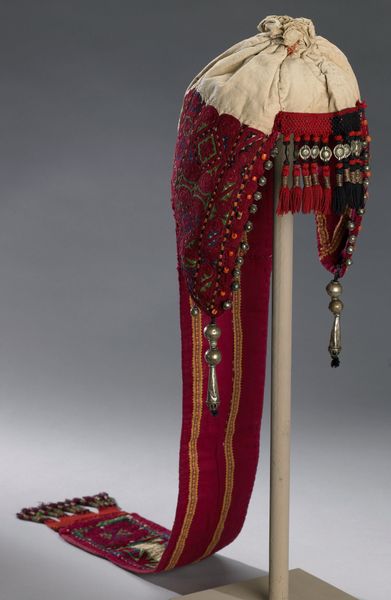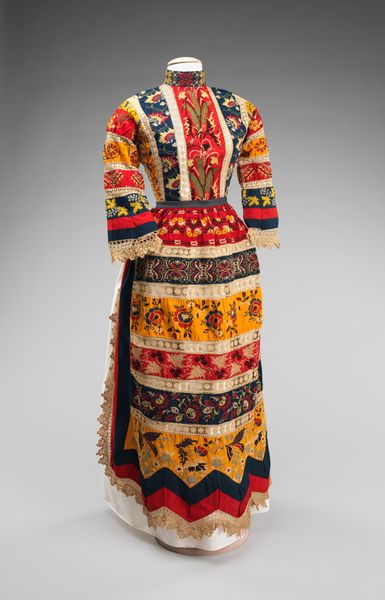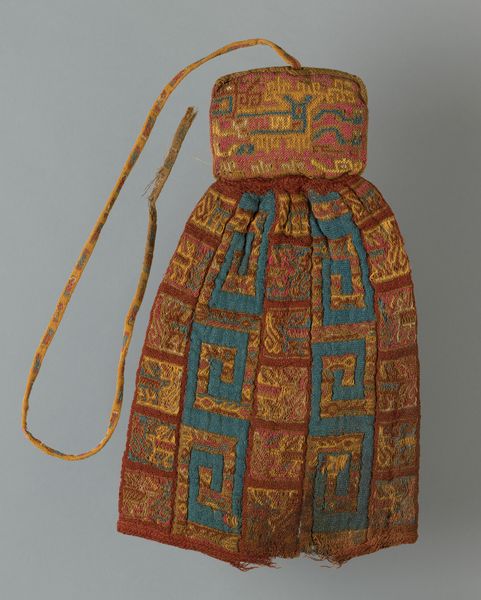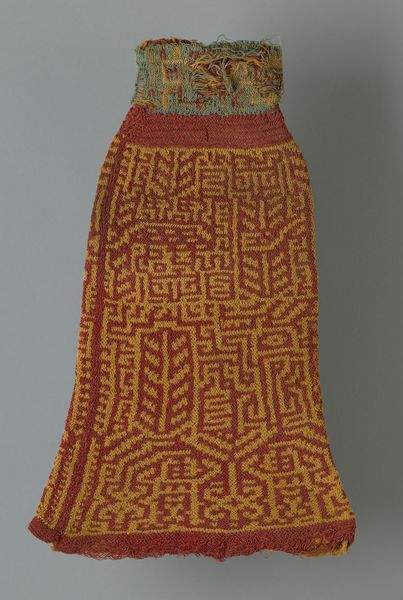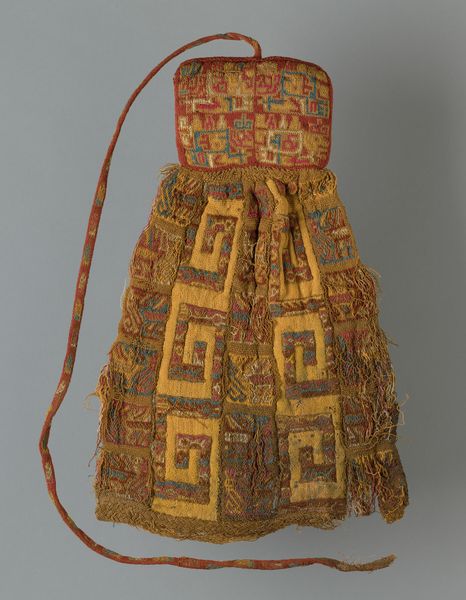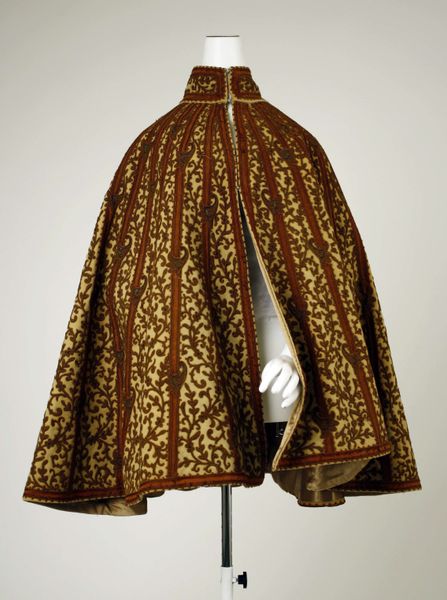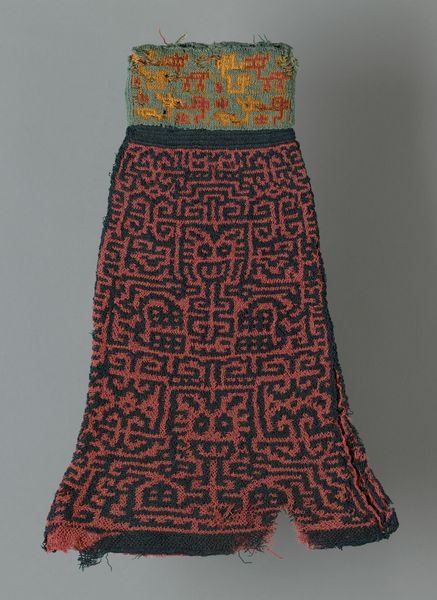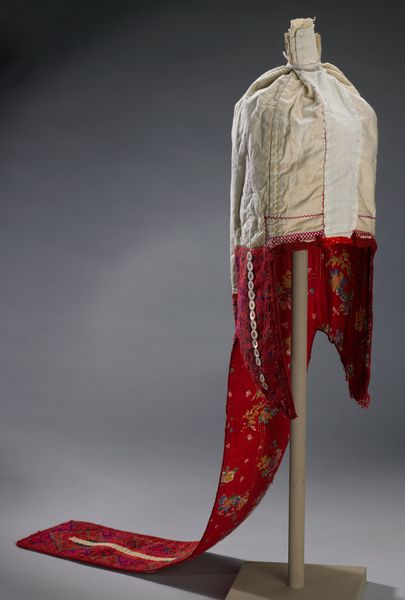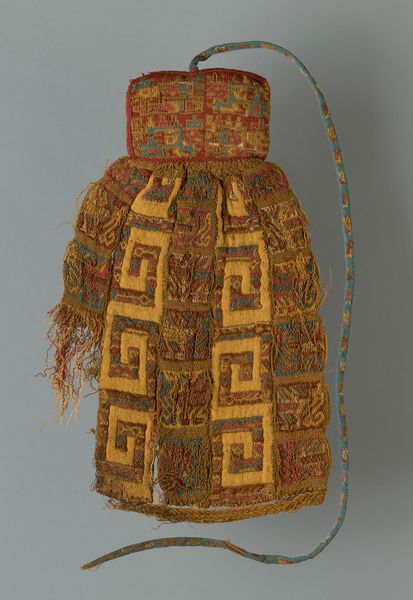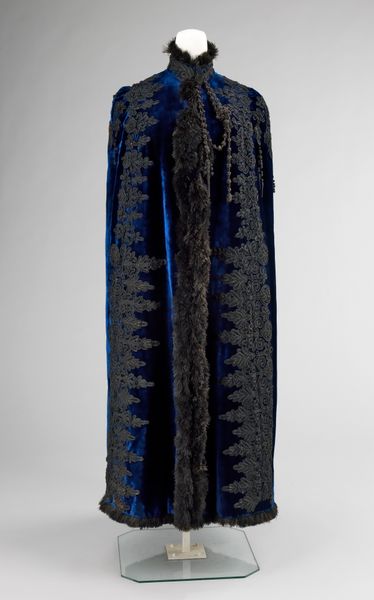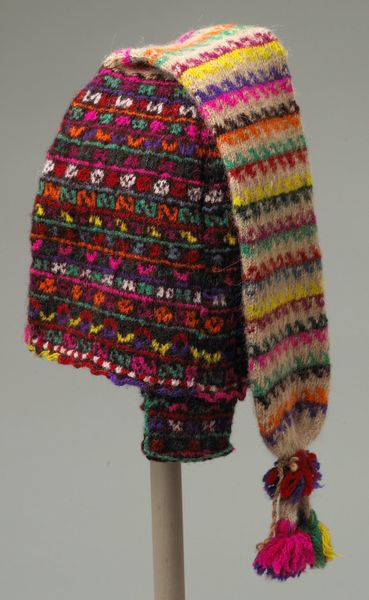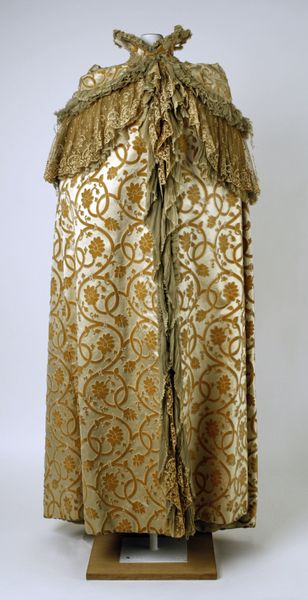
fibre-art, textile
#
fibre-art
#
textile
#
yoruba-art
#
decorative-art
#
identity-politics
Copyright: Public Domain
This one’s a head turner! This nineteenth-century headdress comes from the Owo Kingdom in East Yorubaland, Nigeria. It’s a great example of the use of fashion in communicating identity and power. The magnificent hat consists of red felt with multicoloured beads, cotton thread, and ivory. It has a large, conical shape with strong visual impact. It would have been worn by the chief of the kingdom, who was known as the ‘Olowo’! Alongside this hat, the Olowo would have worn a matching outfit of a red skirt and jacket. The yellow and green embroidered patterns on the red felt are intended to remind the viewer of pangolin scales. Pangolins are nocturnal anteaters with an extremely hard outer armour of overlapping scales. This symbolises protection and natural invincibility. Animal imagery can also be noticed in the two ivory feathers which adorn each side of the hat. These planks of ivory extend upwards above the top of the hat – almost like animal horns. Once more, this creates the impression that the wearer can defend himself and his kingdom. It’s a clear sign of strength. By wearing this hat, the Olowo would establish himself as a powerful warrior. As an expensive and valuable material, the added ivory also provides a sense of wealth and luxury. What might this say about the Owo Kingdom? A similar style of scaled hat is still worn by the Olowo of Owo today, especially during traditional ceremonies. If this hat is a statement of power and protection, can you think of any other fashion accessories which hold hidden meanings?
Comments
minneapolisinstituteofart about 2 years ago
⋮
Yorubaland in Nigeria is divided into a dozen kingdoms, one of which is Owo. The Olowo (king) or Owo would wear this headdress along with a matching jacket and skirt as his ceremonial costume. The outfit relates to the chief's military duties, and is also worn by select officials with impressive military records. The ivory feathers on either side, however, distinguish this headdress as belonging to the ruler. Made of red wool flannel and decorated with yellow and green embroidery and white glass beads, the design is meant to create the impression of the scales of a pangolin. This "armored" anteater is a powerful symbol of invincibility.
Join the conversation
Join millions of artists and users on Artera today and experience the ultimate creative platform.
